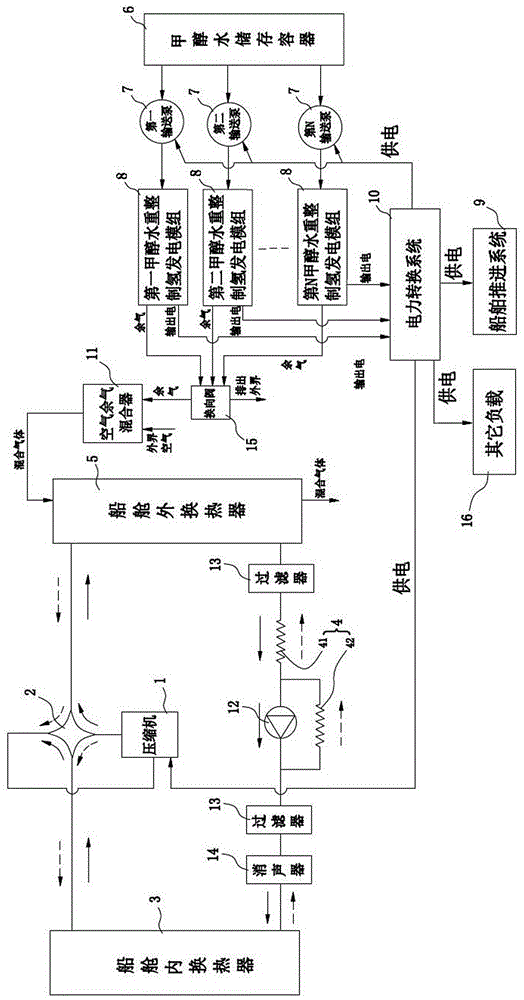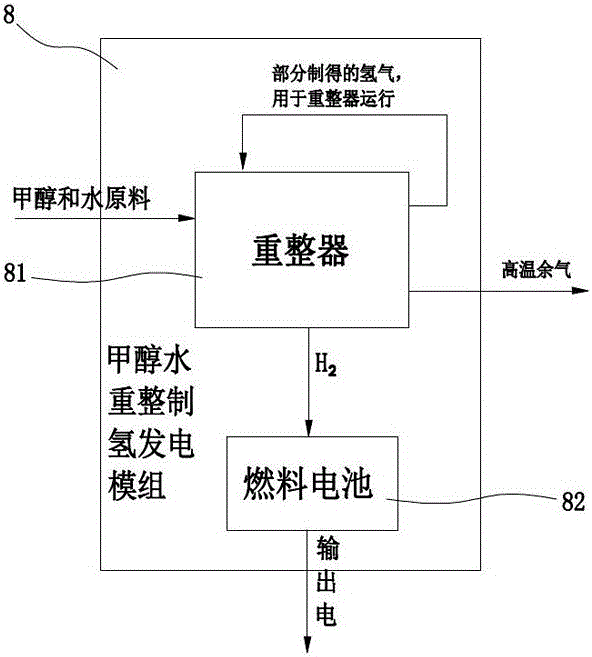Shipborne heat pump air-conditioning system and heating and refrigeration method
A heat pump air-conditioning and ship-borne technology, which is applied in air-conditioning systems, hull ventilation/heating/cooling, heat pumps, etc., can solve the problems of heat pump efficiency reduction, evaporator frosting, and low heat utilization rate, so as to improve utilization efficiency and reduce energy consumption. Low-energy, wide-ranging effects
- Summary
- Abstract
- Description
- Claims
- Application Information
AI Technical Summary
Problems solved by technology
Method used
Image
Examples
Embodiment Construction
[0022] The structural principle and working principle of the present invention will be further described in detail below in conjunction with the accompanying drawings.
[0023] like figure 1 , figure 2 and image 3 As shown, a ship-mounted heat pump air-conditioning system includes a compressor 1, a four-way reversing valve 2, a heat exchanger 3 in the cabin, a throttle valve 4, a heat exchanger 5 outside the cabin, a methanol water storage container 6, and at least two a delivery pump 7, at least two sets of methanol water reforming hydrogen production power generation modules 8, a power conversion system 10, a ship propulsion system 9 and an air residual gas mixer 11; the compressor 1, the four-way reversing valve 2, the cabin The working fluid delivery circuit of the heat pump air conditioner is formed between the inner heat exchanger 3, the throttle valve 4 and the outer heat exchanger 5 of the cabin. figure 1 In the working fluid delivery circuit, the dotted arrow ind...
PUM
 Login to View More
Login to View More Abstract
Description
Claims
Application Information
 Login to View More
Login to View More - R&D
- Intellectual Property
- Life Sciences
- Materials
- Tech Scout
- Unparalleled Data Quality
- Higher Quality Content
- 60% Fewer Hallucinations
Browse by: Latest US Patents, China's latest patents, Technical Efficacy Thesaurus, Application Domain, Technology Topic, Popular Technical Reports.
© 2025 PatSnap. All rights reserved.Legal|Privacy policy|Modern Slavery Act Transparency Statement|Sitemap|About US| Contact US: help@patsnap.com



